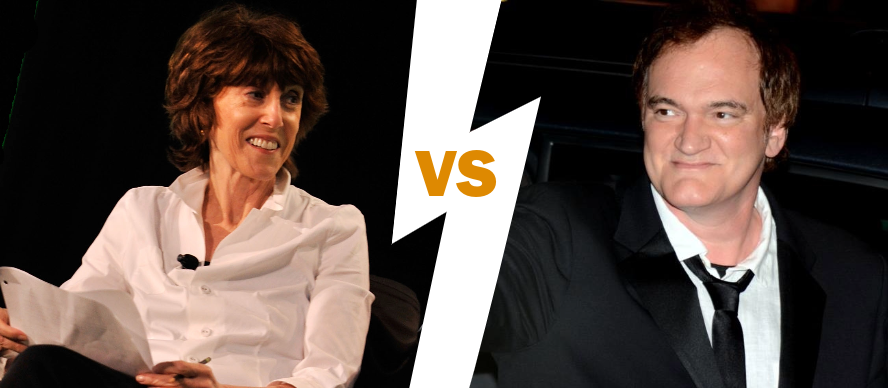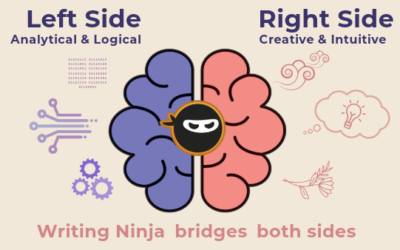The Ultimate Guide to Theme in Screenwriting
Ready to elevate your writing? Using Theme in screenwriting can be a game-changing secret weapon. Dive into storytelling success and bring emotion & depth to your story — with Theme!

.
Noi Sabal
Founder

20 min read • 5,300 words
Today, let’s explore one of the most overlooked, underestimated, and incredibly useful concepts in writing: The Importance of Theme in Screenwriting (and novel writing!). Whether you’re an aspiring screenwriter or an experienced novelist looking to add an extra punch to your stories, understanding the importance of Theme in storytelling is the key to crafting genuinely remarkable stories.
Writing a compelling story goes beyond just stringing together a series of events (that’s just a Slice of Life, not a story). It requires an intricate balance of characters, plot, dialogue, and craft — all put together with a secret sauce that adds depth and meaning to your screenplay, elevating it to new heights: Theme.
Theme is a crucial element that can make or break your script or novel. It adds depth, meaning, and resonance to your stories — especially in scripts. Proper use of themes in screenwriting often separates amateurs from paid, professional writers.
So, let’s start exploring why a strong Theme should be at the core of your storytelling process. Buckle up — ’cause we’re about to jump on a ride that will forever change the way you approach storytelling!

1. What is Theme?
Let’s start by defining what “Theme” actually means when writing screenplays or novels. In simple terms, a Theme represents the underlying message or central idea that a story imparts to its audience. It’s the thread that weaves its way through the narrative, enhancing the story’s depth and resonance beyond the surface level.
Theme in Film Definition
Technically, Themes in film studies can be defined as “the underlying ideas, concepts, or messages that a movie conveys.” Themes are the fundamental threads that run through a film, giving it depth and resonance, and are the building blocks that enable screenwriters to connect with their readers on a deeper level. They allow us as writers to explore complex topics, challenge conventional thinking, and provoke discussions long after Fade Out. Essentially, Themes are what make stories more than just a source of entertainment; they turn them into powerful tools for connection and engagement.
Whoa… what does all of that mean?!
Here at Writing Ninja, we try to make the complexities of storytelling and scriptwriting super accessible. So, instead of worrying about those technical educational definitions, let’s break it down and make Theme easy to use in your writing.
Theme is an underlying idea you want to share with your audience.
It’s kinda that simple…! “Theme” is just a big fat idea you want to share in your story. We call it your “Core Idea” or “Theme.”
Core Ideas/Themes are simple yet definitive statements that address a Universal Truth. It’s a “generic” or well-known or generally understood idea with which any audience member can connect or identify. It’s a Universal Truth that speaks to the human condition — individually or as a whole. It’s what gives your story meaning and emotional resonance. It’s what people identify with — what connects your story to their lives.
Also called a Social Commentary, or the Moral of a Story, your Core Idea or Theme is a statement generic enough to appeal to a broad audience but specific enough to take a stand. By embodying a central Theme throughout the script, you create a sense of purpose and direction in your storytelling, captivating audiences from start to finish.
Themes have the power to stir deep emotions and resonate with viewers on a profound level. By triggering emotional responses, themes elevate the story beyond mere entertainment, leaving a lasting impact and fostering meaningful connections with the audience. For example, some Themes in “Rocky” (written by Sylvester Stallone, 1976) are “Resilience in the face of adversity” and “The transformative power of Love and Determination.”
Theme Statements are also how you, as the writer, get to “Say Something!” or “Make a Point!” — all while entertaining us, your audience. It’s the underlying reason that this story needs to be told by you.

2: What is Theme in Screenwriting?
If the “Core Idea” of your screenplay — your Theme — is what a story is all about, how does that translate into screenwriting? Yeah… but exactly what IS “Theme in Screenwriting”??
First, let’s dispel a common misconception: Themes in scripts/films are more than just ONE word. For example, “Love” is not a Theme — it’s a just a single word, right? And it’s a word that can mean different things to different people. Simply saying that your theme is “Love” doesn’t convey the sentiment behind your choice to use that word. Just saying your script is about “Love” would be like someone walking into a room and randomly shouting, “LOVE!!!” — then turning around and leaving without another word.
Huh? What are they trying to say about Love? Is it positive or negative? Are they for or against Love? So, if you were writing a script about “Love,” your story could posit that Love is good… or impossible. That Love is a nuanced, many-splendored thing… or the bane of your Protagonist’s existence! Are you saying that Love is for everyone? No one? Only for those brave enough to go out and find it?!? Gah…! What ABOUT Love?!
And that’s what we’re talking about when we say “theme in screenwriting” — expanding a core word (or phrase) into a statement that takes a stand and expresses the sentiment behind your story.
.
Theme isn’t a word. It’s a sentence.
.
This is why you need to expand a Core Word like “Love” into a Core Idea when script writing — you need to clarify your story’s stance on your Core Word.
How do you do that? Well, for our “Love” example, the Core Idea could be “Love can heal all wounds” or “Love is for suckers” or “Love is an illusion.” Your Core Idea/Theme can be absolutely anything you want to say about a Core Word like “Love.”
Core Ideas are Universal Truths, ideas that just about anyone in your audience could understand or identify with. They’re what you want to explore, expose, or put to the test in your story.
Core Ideas can be:
- Questions you want to answer.
- Arguments you want to make.
- Ideas you want to explore.
- Moral Dilemmas we as humans experience.
- Beliefs you want to challenge.
- Subjects you want to address.
- The Reason you want to write this story.
Our Ninjas analyzed tons of movies and tv shows to create our unique Brainstorm Boards, including one for Theme. So instead of learning all this about Theme, you can use Writing Ninja to click-n-pick your way to unique, optimized Theme in seconds. (Seriously!) Get your Free account
You can even take different “sides” by examining varying or conflicting stances on the same idea. For our Love example, that might be “Love means different things to different people” — then you can pick as many sides as you want to explore.
When your screenplay effectively explores Core Words and turns them into Core Ideas, it allows the audience to connect with your story. Then they can get a feel for what it’s REALLY about — especially if your Core Idea/Theme can be universally understood or emotionally felt.
See the “Similar Core Words, Very Different Themes” section below for a fun list of theme examples comparing Nora Ephron and Quentin Tarantino (Yep! They use similar Core Words!)

3: Why Stories NEED Themes
The importance of theme in script writing can not be underestimated. When you only have 80-120 pages, you have to be economical in your writing. Developing a Theme helps you get the best version of your story out, quickly. Finished screenplays that don’t have a Theme don’t have any… oomph. Instead of being engaging stories, these Themeless scripts/books read more like they’re a Slice of Life; they’re full of situations… actions… things happening, one after another — but for no real reason, with no unifying thread.
Themeless stories leave you saying, “Yeah, okay, that all happened… So…?” after you read ’em. They’re unsatisfying… they’re empty calories you regret after ingesting. Why? Because there wasn’t a “Core Idea” inside to give it depth — nothing to sink your teeth into. It was just a whole bunch of things happening — without a Universal Idea that could connect you, the reader, to the story.

It’s easy to find your story’s Core Idea and write a statement that exposes the heart of your story. Simply use “The Three M’s” to find a universally understood “Message,” “Moral,” or “Meaning” of the story.
Having a Core Idea or Theme with one (or more!) of The 3Ms will help you infuse your characters with traits that make your point and help drive the action, dialogue, world, and subtext in your writing. So you need to discover Your Core Idea/Theme by thinking about the Message you want to share, the Moral of your Story, or the Meaning behind your script/book before you start writing (… or suffer the Wrath of the Rewrite!)
Your story needs an underlying Universal Theme made with The 3Ms to connect LOTS of people to this specific story.
This Core Idea (or Theme) becomes the Heart of your story – it makes your script come to life for a broad audience — and that translates into a great movie. It pumps your story full of that universally identifiable Message, Moral, or Meaning. Any Theme can help your story resonate with readers and audiences. But when you infuse your story with more than one of The 3Ms… well, that becomes the secret sauce that really makes Readers identify with characters and engage with your story.
So, how exactly do screenplay Themes connect readers to the story? There are a bunch of ways, but generally Themes will #1: Make you a Better Writer and #2: Help you connect with Readers. Let’s take a look at how:
#1: How Theme… Makes You a Better Writer
Theme Infuses Writing with Depth & Subtext
In the hands of a skilled screenwriter, Themes can add layers of depth and subtext to any story. They enable you to tackle complex ideas, social issues, or philosophical concepts, encouraging critical thinking and promoting valuable discussions. Screenplay Themes provide an opportunity to explore the human condition and challenge societal norms, making your story more captivating and thought-provoking. When you assign one of the 3 Ms (Message, Moral, or Meaning) to your story before you write, you are likely to inherently, automatically, and unconsciously write toward that Theme. So, just picking a Theme — any theme, even if it’s not “right” yet — can make you a better writer! 😀
Theme Guides Your Story Journey
In the vast ocean of creativity, a strong Theme leads the way to great stories. It provides a thread that ties together the various story elements, ensuring your plot is focused and engaging. Without a Theme, your story may wander aimlessly, leaving both you and your audience feeling lost and disconnected.
Think of your Theme as the compass that directs your characters’ journeys and the plot’s trajectory. It helps you make informed decisions about which scenes to include, which characters to develop, and which conflicts to explore. By consciously incorporating your Theme in your story, you can weave a cohesive and impactful narrative without getting caught in the web of unnecessary subplots or convoluted storylines. It helps you hone your story, making every scene or chapter count.
Theme Builds Your Brand or Calling Card
In both screenwriting and novel writing, setting yourself apart is essential. A strong Theme can be the cornerstone of your unique brand as a screenwriter or novelist. By consistently incorporating Themes that resonate with your personal beliefs or passions, you carve out a distinct voice in the industry.
#2: How Theme… Connects with Readers
Theme Captivates the Mind and Soul
At its core, a screenplay is meant to captivate audiences and evoke emotions that resonate within them. A well-developed Theme does this because it provides a universal connection by exploring profound and relatable human experiences. Whether your story deals with anything from Love and Loss to Redemption and the Pursuit of Dreams, a resonant Theme becomes the lifeblood of your story, weaving through every scene and engaging the hearts and minds of your viewers.
Consider a film like “The Shawshank Redemption.” It seamlessly incorporates Core Words like Hope, Friendship, and the Triumph of the Human Spirit, leaving a lasting impact and resonating with audiences worldwide. Themes speak to our shared humanity; when we as writers successfully tap into a Universal Theme, we create stories that leave a lasting impression.
Theme Creates Impactful Messages
As writers, we have the power to influence and inspire through our stories. Themes communicate underlying messages and profound insights into how we see Life. They allow us to explore societal issues, challenge norms, and encourage introspection.
Scripts for movies like “Inception” or “Eternal Sunshine of the Spotless Mind” are entertaining, sure. But they’re also thought-provoking masterpieces. They tackle intricate Core Words such as Identity, Memory, and the Nature of Reality. Exploring these complex ideas leaves unforgettable impressions on viewers, sparking discussions and expanding our worldviews.
So, by carefully selecting and developing a Theme, you can infuse your screenplay with your very own unique perspective. Whether it’s shedding light on an overlooked social issue or celebrating the triumph of the human spirit, a well-developed Theme can make a lasting impact on your audience.
Theme Enhances Character Development
Theme and character development go hand in hand, enriching each other in a symbiotic dance. A well-crafted Theme allows you to really dig into your characters’ motivations, fears, and desires. It allows you to explore the human condition, which leads to complex, multi-dimensional characters.
Themes provide a lens through which your characters view their world, driving their actions, decisions, and relationships. They help create character arcs that resonate as your Protagonist(s) navigate the challenges and obstacles presented by the Theme. This interplay between Screenplay Themes & Character Development creates a flowing narrative — where each character becomes a way to explore and embody different aspects of your Theme.

Nora Ephron photo by Joe Corrigan, licensed under CC BY 2.0 DEED. Quentin Tarantino photo by Georges Biard, licensed under CC BY-SA 3.0 DEED
Theme Screenwriting Masters
Nora Ephron & Quentin Tarantino
Similar Core Words, Very Different Themes
Consider the work of screenwriters Nora Ephron and Quentin Tarantino. They’re two very different writers — with two (very!!) different styles of writing. Nora Ephron, known for her witty romantic comedies like “When Harry Met Sally” and “Sleepless in Seattle,” had a distinctly “light” style of writing. She was all about sharp dialogue, relatable characters, and heartwarming stories. On the other hand, Quentin Tarantino, famous for his gritty and unconventional films like “Pulp Fiction” and “Kill Bill,” takes a more edgy and dark approach to storytelling.
Yet, surprisingly, the screenplays of both Ephron and Tarantino are often characterized by similar recurring Core Words. (Seriously!) They both explore the intricacies of Relationships and the idea of Redemption — in very different ways. That’s why a single word isn’t a Theme. Because who would think that “Pulp Fiction” and “Sleepless in Seattle” have the same theme?! Yet they’re both “about Relationships.” It’s what you wrap around that core word that takes a stance and makes it a Theme.
In Ephron’s work, Relationships are explored by diving into the complexities of human connections and the ups and downs of Love. Her characters often find themselves grappling with love, heartbreak, and the eternal search for a soulmate. Ephron masterfully wove the Core Words Relationships and Love into her stories, making us laugh, cry, and reflect on our own experiences.
On the other hand, Tarantino approaches Relationships from a very different angle. His characters often have unconventional interpersonal connections and face morally ambiguous situations. Nevertheless, he still digs into the same Core Words of Relationships, Love, and Loyalty — but in a waaay darker, twisted way. Tarantino’s Theme scripts often explore the consequences of Love and the lengths people would go to protect the people they’re in a Relationship with.
Both screenwriters also touched upon the Core Word of Redemption in their films. Ephron often presented her characters with opportunities for personal growth and second chances. In the two-hander “Julie & Julia” (2009), Julia Child (played by Meryl Streep) has to overcome initial rejections and obstacles to ultimately persevere and eventually get published. And aspiring writer Julie Powell (played by Amy Adams) is stuck in a monotonous job, so she sets out on a year-long challenge to cook all the recipes from Julia Child’s cookbook and document her experiences through a blog. This challenge becomes Julie’s chance for Redemption and a fresh start as she gains confidence, discovers her passion for writing, and ultimately finds success. In both storylines, Ephron embraced the Core Idea that “Even after heartbreak, failure, or feeling stuck, there is always hope for personal growth, Redemption, and a fresh start.”
In Tarantino’s world, Redemption takes on a much a grittier embodiment. His characters often navigate a world of violence and crime, seeking Redemption through acts of heroism or vengeance (or, often, both together!). Tarantino challenges our moral compass by presenting complex characters who may find Redemption in unexpected ways. In “Pulp Fiction” (1994), Jules Winnfield (played by Samuel L. Jackson) is a cold-blooded hitman who has survived a point-blank shooting. Jules interprets this event as a divine intervention and decides, in a quest for Redemption, to become a “shepherd” to those he encounters.
So, even though Nora Ephron and Quentin Tarantino have (super!) different writing styles, they actually delve into some very similar Core Words and Themes in their stories.
Theme Improves Your Screenwriting
By developing and harnessing your own signature Themes, you establish a unique identity as a screenwriter, making it easier for producers, directors, and audiences to recognize and appreciate your work.
So, instead of writing a Slice of Life, pick a Theme and go with it! Defining what you want to say before writing your first draft can help you write a page-turning story.

4: Theme Examples
As we learned above, when you choose a Core Word and take a stance on it, you’ve created a Theme. So Let’s continue our “Love” Core Word and see what kind of quick, simple screenwriting themes we could make out of that one word.
Screenwriting Themes for “Love”
Love can not bridge the gap between two worlds — Witness
Love can bridge the gap between two worlds — The African Queen
Love can survive the test of time — The Notebook
Love can heal a broken heart — Eternal Sunshine of the Spotless Mind
Love can trigger personal transformation — Silver Linings Playbook
Love can transcend physical limitations — The Shape of Water
Love can inspire great acts of sacrifice — Titanic
Love can defy societal norms — Brokeback Mountain
Love can break down cultural barriers — Slumdog Millionaire
Love can empower individuals to fight for justice — 12 Years a Slave
Love can overcome mental illness — A Beautiful Mind
If you love someone, set them free — CODA
This is just a very small example list of themes you could make for “Love”… It could have hundreds of theme stated examples!!)
Movie Theme Examples
To better grasp the influence and versatility of Theme in novel and script writing, let’s dig a little deeper in a some examples of themes in screenplays:
List of Themes
8 Great Movie Themes
1. “Eternal Sunshine of the Spotless Mind”
(story by Charlie Kaufman & Michel Gondry & Pierre Bismuth • screenplay by Charlie Kaufman • 2004)
This mind-bending romance delves into the Core Words of “Love,” “Relationships,” “Pain,” and “Memory.” Through its intricate narrative, Charlie Kaufman’s one-of-a-kind story explores the idea that “Even Painful Memories contribute to the richness of our lives.” Other Themes explore “the Complexities of Relationships” and posit that “Love can be found within a Relationship’s imperfections.” With a Theme of “Embracing the painful truths of Love,” “Eternal Sunshine…” challenges conventional notions of romantic relationships and invites audiences to reflect on the profound impact Memories have on Love and Relationships.
2. “The Shawshank Redemption”
(written by Stephen King and Frank Darabont • 1994)
A tale of “Hope” (as in “Never give up Hope”) and “Perseverance” set in the confines of a prison, this film emphasizes the “Transformative power of Perseverance.” Core Words could also include “Relationships” and “Connection,” both of which lend themselves to a Theme of “Finding solace, purpose, and connection” even in the most unlikely of places. These Core Ideas resonate deeply with audiences, reminding us, “There is always light at the end of the tunnel.”
3. “Thelma & Louise”
(written by Callie Khouri • 1991)
Callie Khouri’s groundbreaking screenplay follows the journey of Thelma and Louise, two ordinary women facing oppressive circumstances. They break free from societal constraints when they go on a transformative journey, as the story tackles the Core Words of “Self-discovery,” “Liberation,” “Empowerment,” “Friendship,” and “Freedom.” This exhilarating road trip story challenges societal norms and highlights the Themes of “What it means to be a woman in modern society,” “The struggle against gender norms,” “The power of female Friendship,” and that sometimes “Breaking the rules leads to Freedom and Empowerment.”
4. “The Dark Knight Trilogy”
(written by Christopher Nolan and David S. Goyer • 2005-2012) – Christopher Nolan’s iconic superhero trilogy explores “Sacrifice,” “Justice,” and “Good vs. Evil.”
With its gritty realism and thought-provoking character arcs, the trilogy delves into the idea that “Sometimes Justice means confronting our own darkness” and that “There is a thin line between Good and Evil.” It challenges our conventional notions of heroism and asks us, “What must be Sacrificed in the pursuit of a better world?” Through its exploration of these Themes, “The Dark Knight Trilogy” remains a powerful reflection on the human condition and the complexities of our world.
5. “Monster”
(written by Patty Jenkins • 2003)
Patty Jenkins’ screenplay for “Monster” delves into the dark and complex story of real-life serial killer Aileen Wuornos, shedding light on how society forced this disenfranchised woman to become a killer. The Core Words of “Morality,” “Femininity,” and “Survival” take center stage in this gripping drama, with Themes of “How far should you go to save yourself?” as it sets out to “Shine a light on the experiences of marginalized women,” and digs into “What are the consequences of societal neglect?”
6. “Little Miss Sunshine”
(written by Michael Arndt • 2006)
This heartwarming comedy-drama explores “Success,” “Individuality,” “Love,” “Family,” “Support,” “Society,” and “Beauty.” (Whoa – that’s a lot of Core Words! No wonder it won the Oscar for Best Original Screenplay.) Through the journey of the dysfunctional Hoover family, this script earns mad props for its exploration of many Themes: “Success and happiness should not be defined by society,” “Individuality should be embraced and celebrated,” “Success is in the eye of the beholder,” “The importance of staying true to yourself,” and that “Sometimes beauty lives in imperfection.” With its humor and heartfelt moments, “Little Miss Sunshine” ultimately reminds us that “Love, Acceptance, and Support can bring a family together.”
7. “The Social Network”
(written by Aaron Sorkin • 2010)
Focusing on the creation and rise of Facebook, this film explores the Core Words of “Ambition,” “Betrayal,” “Connection and Relationships,” “Technology,” and “Success.” It delves into the Themes of “What is the Price of Success,” “Ambition can drive people to great heights, but it often comes at a cost.” It asks, “What is the influence of Ambition on Relationships?” and “What impact does technology have on Connection and Relationships?” It also examines “The consequences of Ambition on personal & professional life” and “The darker side of Success.”
8. “The Pursuit of Happyness”
(written by Steve Conrad • 2006)
This inspiring true story beautifully depicts the Core Words of “Hope,” “Dreams,” “Resilience,” and “Adversity” as the script explores the Theme of “Overcoming adversity to achieve one’s dreams.” It showcases the indomitable human spirit and “The power of Hope and determination.” Through the struggles and setbacks the Protagonist faces, the story reminds us that we should “Never give up on our Dreams” — even when faced with overwhelming obstacles. Will Smith’s character struggles against homelessness and financial hardship while chasing his aspirations, which embodies the compelling Theme of “Resilience in the face of Adversity.” And, with unwavering belief and the willingness to work hard, even “The most challenging circumstances can be overcome.”
Want to develop a Theme in 3 super-easy steps? Writing Ninja has a HUGE list of themes with hundreds of Core Words for movies and TV shows. Our one-of-a-kind Brainstorm Board® let you click-n-pick your way to unique, optimized themes for screenplays & novels in seconds, making Theme FUN! And… you can get started for Free now.
In these screenplay theme examples, we can see that from Jim Carrey’s journey through the maze of lost memories to Will Smith’s pursuit of happiness, memorable stories are built on solid Themes, full of numerous Core Words that help them resonate with audiences long after Fade Out.
Now that we’ve explored some of the best movie Themes, let’s explore how to find yours!

5. How to Find Your Story’s Theme
By now, you’re probably chomping at the bit to get started, asking yourself, “How do I develop my movie theme?” or “How can I find my novel’s theme?” To that we say… Yay!!! That means you understand that developing a Theme for your story is the most important thing you can do as a professional screenwriter. If you only choose to listen to one piece of advice from us here at Writing Ninja, THIS is it.
Why? Because your audience needs to identify with something in your story. Otherwise, they won’t care. They need something to hook them — from where they are in their life. If you don’t have a clearly defined Core Idea, something that gives you psychological stakes and gets your audience invested, you have a hollow shell of a story. One in which things happen…. but for no reason. It leaves your audience saying, “So what…?” They feel no connection.
The 3Ms: The Message, Moral, or Meaning of your story
To start finding your story’s theme, let’s learn from a writer who got screenplay theme right. Let’s take a look at a great recent movie theme example, one with a Theme that elevated it’s story into an Oscar-winning screenplay for Best Adapted Screenplay and Best Picture, “CODA.”
Find Your Story Heart: “CODA” Example
Very few people are Children of Deaf Adults, let alone those from a fishing family in Massachusetts. Yet, that is the setting in CODA, a feature that skyrocketed AppleTV+ subscriptions. What made Apple engage in a bidding war at Sundance for this little indie film? It’s heart.
Writer/director Siân Heder infused CODA with a universally understood beating heart of “Family” and “Coming of Age.” So her indie film not only won all kinds of awards (including Oscars for both Best Adapted Screenplay and Best Picture), it also generated a considerable amount of buzz. That word of mouth drove a 25% increase in “new viewers” on the then-new Apple streaming service — in just the first 5 days after its win.
Why were so many people talking about CODA? Yes, because it’s a good movie and won many awards. But plenty of great movies out there don’t generate this much buzz. So what makes people tell others, “You have to see this”?
A universal Core Idea. Something that makes the audience see some part of themselves in the character.
At its heart, CODA has several Core Words that people can universally identify with: “Family,” “Love,” “Sacrifice,” and “Growing Up.” Everyone has a family (or wants one). Most people have or want Love. Everyone grows up. In a WGA Script Breakdown, Siân Heder said that she saw CODA as a coming-of-age journey for all of the characters in a Family that Loves each other so much, they all end up trying to Sacrifice for one another. Before writing, she consciously set out to answer, “How does each character have to grow up?” over the course of her story.
Writing Ninja has story themes lists with hundreds of movies and tv show Core Words. Our one-of-a-kind Brainstorm Boards® let you click-n-pick your way to unique, optimized Theme in seconds, making Theme FUN! Get started for Free now
Write your Core Idea using the 3Ms: Message, Moral, or Meaning
Okay, so the “Core Idea” of your screenplay is what your story, at its heart, is all about. And your Core Idea (or Theme) is not just a single word. Remember, “Love” is not a Theme — it’s a Core WORD around which you can craft a Core IDEA for your story.
Now it’s your turn! Take a stand and tell your audience “My story is about _____ because… _________.” in the exercise below.

Brainstorm Your Core Word & Idea
Follow the 3 steps below to create your Core Idea and Universal Theme Statement.
STEP 1 — First, think of what you might want to share and explore in your story. Why do you want to write this story and not another? Find the general, universal truth you want to share.
STEP 2 — Next, pick a word, any word. What word or phrase matches the story you want to tell? This will be your Core Word. (Writing Ninja has hundreds and hundreds of possible Core Words in easy-to-use lists!)
STEP 3 — Once you define your Core Word, define your Reason for writing it. This Core Idea is made by simply expanding that single word into an idea — something that reflects the stance you want to take in your story.
Use the steps above to find your Core Word and complete this sentence:
“My story is about (Core Word) and I want to talk about it because (Core Idea).”
This can serve as your First Draft Theme. As you develop your story, you can fine tune your Theme Statement, expanding and refining it until you’re done writing. Once your story is done, you’ll have a final Theme Statement to help you pitch and sell your story. 😉
Want to develop a Theme in 3 super-easy steps? Our one-of-a-kind Brainstorm Boards® let you click-n-pick your way to unique, optimized Theme in seconds, making Theme FUN! Get started for Free now
Try to be specific but universal when writing your Core Idea or Theme Statement. When you keep your idea high level, you will tap into an accessible idea for a broad audience. For example, “Love can heal” or “Love can come in many forms” are both universal — just about anyone can buy into that as an idea behind a movie. But “Love as friendship can help two inmates get through decades in prison” is specific to Shawshank Redemption.
Be specific, but universal.
The more “generic” or “high level” you can make your Theme Statement or Core Idea, the easier you’ll find infusing your story with Theme — and more people will identify with the beating heart of your screenplay: your Core Idea.

And finally, one last tip….
No matter how you like to work — if you’re a Planner or a Pantser — thinking about your Core Idea or Theme (even a little bit!) before you start writing can save you a TON of time later.
Because your Theme should be the Reason you want to write this story. And if you can define that Why — even a little bit — before you write, you will be in better shape at the end of your first draft.
If you don’t know your WHY, or don’t think you have the “right” one yet, don’t worry!! You can always go back after you’re done writing. But… it’s waaaayyyy easier to define a Core Idea before you start writing — even if it’s a little vague or not quite right yet. Because even having a “meh” Core Idea is better than not having one and writing a Slice of Life situation instead of a Real Story!
Sure, if you define your Theme beforehand, it may change as you write. But if you’re consciously thinking of your Core Idea while you write, even as your story shifts and your characters morph, you’re still writing for a reason, which means you’ll inherently write towards something, creating stories that will be more widely appreciated. Once you figure out what you want to tell the world — your Why, the reason you’re writing this script — then you’ll be able to infuse resonance and meaning throughout your story.

Phew…! That was a lot.
If this all seems overwhelming, check out Writing Ninja! Our one-of-a-kind Brainstorm Boards® make Theme (and writing!) super fun and easy. We have a Brainstorm Board dedicated to helping you figure out your Core Idea & Theme, with huge lists full of hundreds of movie and tv show Core Words. In three simple steps, you can have your Theme ironed out — without having to worry about any of the above!! Grab your Free Forever Account and give Writing Ninja a try!
Conclusion
When you embrace the power of Theme, it will guide your characters, shape your plot, and infuse your story with meaning and emotional resonance.
So, go forth and conquer your story with Theme! When you write a well-crafted Theme at the core of your screenplay, you’re creating a story that not only entertains… but also leaves a lasting impact.
About the Author
Noi Sabal has been steeped in story for decades: writing screenplays, teaching storytelling at the university level, editing TV shows & feature films, and consulting on scripts. Her work has been broadcast on ABC, Disney, Fox, Nickelodeon, Sundance, and many more. In 2017, Noi founded Writing Ninja®, the Story Development Platform that empowers writers to build better stories, one Brainstorm Board® at a time.
(And, just in case you’re interested, here’s the fabulous WGA Script Breakdown where CODA writer/director Siân Heder breaks down her Oscar-winning screenplay. It’s well worth the watch!!!)
All names, images, and brands are trademarks™ or registered® trademarks of their respective owners. Use of them does not imply any affiliation with or endorsement by them.
Recent Articles
Unlock Your Writing Potential with Revolutionary New Software for Writers
Revolutionize your writing process! A new, easy-to-use software for writers is about to become your secret weapon...
The Inspired Writing of the ‘Severance’ Series
Want to write a script like Severance? Ninja Neno discovers the secret behind this amazing TV show -- after sneaking...
Know How to Write Antagonists to Discover Your Perfect Ending
Crafting an amazing Ending for your story begins with how to write Antagonists. Discover how to develop compelling,...

Writing Ninja is a story development platform that makes it really easy for writers to create professional-quality stories for their screenplays and novels.
Membership
Features
Why Writing Ninja
Company
On the Ninja Blog
Unlock Your Writing Potential with Revolutionary New Software for Writers
Revolutionize your writing process! A new, easy-to-use software for writers is about to become your secret weapon for...
The Inspired Writing of the ‘Severance’ Series
Want to write a script like Severance? Ninja Neno discovers the secret behind this amazing TV show -- after sneaking into...





